I’m always on the lookout for good macaron flavour combinations.
When I was in Pittsburgh last week, I stopped and got three new macarons: white chocolate basil, peach violet, and earl grey. The white chocolate basil was very interesting, but I’m not sure if I need to ever eat one again. Peach violet tasted too artificial, but the earl grey was perfect. I knew that I needed to veganize and recreate it for you.
Certain teas really come out when you bake with them — and earl grey is one of them. Chai is another great tea to use for baking projects. I encourage you to experiment and use organic teas when possible.
For this Vegan French macaron recipe, I put the earl grey in the meringue cookie while I made a lemon buttercream for the filling. If you want your tea leaves very fine, run them through a spice grinder before sifting them. The larger leaves didn’t bother me (and I like the way they look in the finished product), but some people might like a smoother texture.
Out of all of the egg-free and regular macarons I’ve made over the years, this has been one of the best and tastiest recipes. It tastes the most authentic out of my egg-free batches. You will love them!
I don’t plan on going into as much detail as I did in my first vegan macaron post; please read this one first before executing this Vegan French Macarons Earl Grey & Lemon recipe.
I will say this again: macarons are challenging cookies to make if you make them traditionally or with vegan ingredients. If at first, you don’t succeed, try again!
Vegan French Macarons: Earl Grey & Lemon
Course: Uncategorized4
servings30
minutes40
minutes300
kcalRecipe adapted from my original Chocolate & Amaretto Macarons
Ingredients
liquid from one 15 oz can of chickpeas; chickpeas saved for another use
1/2 c. organic cane sugar
1 c. almond flour, like Bob’s Red Mill
1/2 c. vegan powdered sugar
1/8 c. loose early grey tea, about 6-7 tea bags
1 tsp. vanilla infused bourbon, plus more as needed
- For the icing
2 T. organic non-hydrogenated shortening, like Spectrum
2 1/3 c. vegan powdered sugar2 1/3 c. vegan powdered sugar
1 T. lemon extract, or more vanilla
a few T. almond milk, as needed
- Migliori Siti Non Aams
- Casino Non Aams
- Casino Senza Autoesclusione
- Casinos Not On Gamstop
- App Tài Xỉu Online Uy Tín
- Nederlandse Bookmakers
Directions
- In a small saucepan, bring your chickpea liquid to a boil. When it boils, lower the heat slightly and allow it to simmer/reduce for 10 solid minutes - set a timer! This boiling liquid will smell weird, FYI. You want it to reduce to about 1/3 cup.
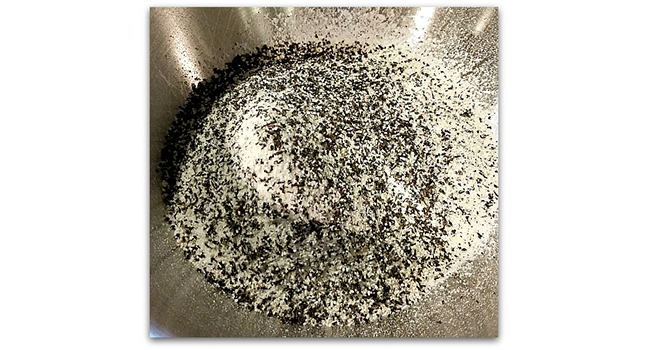
- Transfer the powdery mix to the sifter and sift. Some macaron recipes I’ve used say to sift three times. I only sifted this recipe once. Discard any large chunks that won’t go through the sifter.
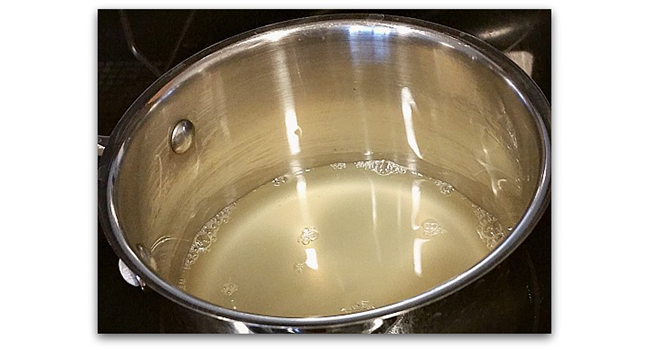
- Measure out your cane sugar. Set it aside.
- While that’s reducing, combine the almond flour, powdered sugar, and tea leaves in the food processor. Pulse to combine and run it for a minute or two.
- Once your chickpea liquid has reduced, pour it into your stand mixer bowl and attach your whisk. Turn the mixer on to a medium-high setting (about a 5-6 setting) and whisk for 2 solid minutes - set a timer! The mixture should get frothy and foamy.
- Add your cane sugar. Beat the mixture on high for 5 minutes - again, set a timer! This is the stage where true magic happens. It’s amazing to watch! When you’re finished, the mixture should look like a meringue with stiff, glossy peaks. After, add your teaspoon of vanilla and beat on high for 1 more minute.
- When your meringue is done, fold in the sifted mixture in thirds. (Pour one-third in and fold. Repeat.) At this stage, I found that my batter was a little dry. I added another teaspoon or two of vanilla to the batter. You want it to be a thick, firm batter, but you also want it to be a little shiny. Someone likened it to lava flowing slowly down a mountain, but I’m not sure what sense that makes. This is the stage that you just have to get the knack for. This is why macaron-making is challenging!
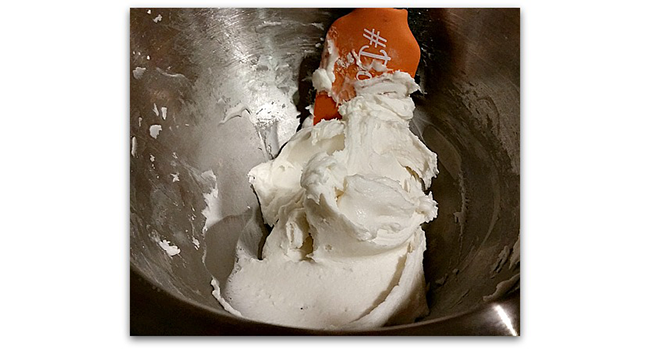
- Load the batter into your piping bag with a spatula. Snip a hole, about a half-inch, from the end of the bag. If I hold the bag upright at a 90-degree angle, the batter should drip out slowly, most likely in small blobs. If it’s runny, you have a problem. If it’s stiff and not moving without help, you have a different problem! This takes finesse.
- Pipe cookies the size of a quarter/half a dollar onto your Silpat mats. One thing I will recommend - doubling your baking sheets. I’ve read this in numerous macaron-making articles. It keeps the bottoms from burning. Repeat piping the batter until you run out of batter - or room.
- When you’re done piping, smack the cookie sheets on the counter a few times. You want to get the macarons to smooth out and release any air bubbles inside. Whack them - don’t be afraid to hurt them. My macarons started with small peaks, but once I smacked them a few times, the tops became smoother. That’s how you know the batter is good.
- Allow the macarons to dry on the counter for 45 minutes to 1 hour. They should be dry to the lightest touch - don’t poke them, haha.
- As the drying time winds down, preheat the oven to 205° F.
- Bake the macarons for 30 minutes. When the 30 minutes have elapsed, turn the oven off and let the cookies sit in the closed oven for 15 minutes. After those 15 minutes have elapsed, open the oven door and let them cool for another 15 minutes before removing them from the oven.
- For the icing
- Combine the ingredients in a medium-sized bowl and use a spatula to combine. If you need a little more liquid to get the icing together, add a little almond milk to the mix, about a tablespoon at a time.
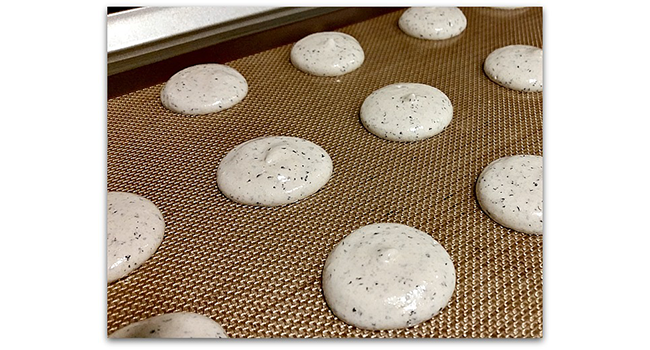
- Using another piping bag, gently pipe the icing onto one side of a macaron. Grab another macaron and sandwich them together. (I like to call it the reverse Oreo method. You know, when you were a kid and you “unscrewed” the Oreo cookies? Well, twist the macarons to make them go together!) If you have some leftover, save it in the freezer for another use!
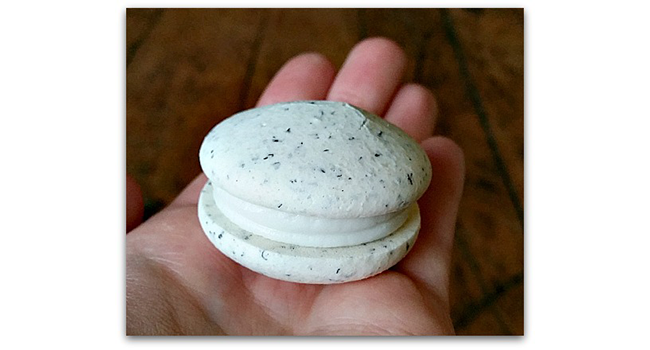
- These Vegan French Macarons are light and fluffy — and taste like a happy tea party! As a side note, I baked these cookies on a rainy day, and humidity does affect them; my feet did not develop as well as they should have. They still taste amazing, though! Enjoy:-)
Cheers,
-Aileen
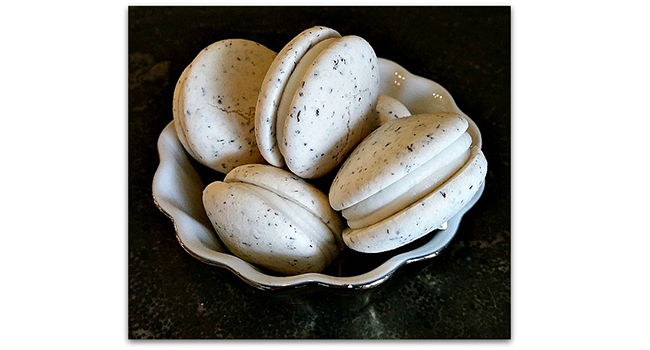
Leave a Reply